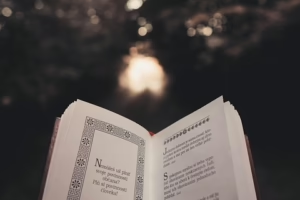The Mindful Path: Stoicism and the Art of Living Well
Introduction
In the modern world, filled with uncertainty and rapid change, the ancient philosophy of Stoicism has found renewed relevance. This philosophy, rooted in the teachings of thinkers such as Epictetus, Seneca, and Marcus Aurelius, offers practical wisdom for navigating the complexities of contemporary life. By integrating Stoicism with modern mindfulness practices, individuals can cultivate resilience, clarity, and a profound sense of well-being. This article explores the principles of Stoicism, how they intersect with mindfulness, and the ways in which they can be applied to live a more fulfilling life.
Understanding Stoicism
The Historical Context
Stoicism originated in Athens during the early 3rd century BCE, established by Zeno of Citium. It was a response to the political turmoil and societal changes of the time. The Stoics emphasized the importance of virtue, rationality, and self-control, viewing life as a series of events beyond one’s control, while asserting that one’s responses to those events are crucial.
Core Principles of Stoicism
-
Dichotomy of Control: At the heart of Stoicism is the concept of differentiating between what we can control and what we cannot. This discernment helps to diminish anxiety and fosters a focused response to life’s challenges.
-
Virtue as the Highest Good: For Stoics, living a virtuous life—one marked by wisdom, courage, justice, and temperance—is the ultimate goal. Material possessions and external validation are seen as transient and ultimately unfulfilling.
-
Acceptance of Fate (Amor Fati): Stoicism teaches acceptance of the present moment and the recognition that everything happens for a reason. This philosophy discourages resistance to pain or adverse situations and encourages finding meaning in all experiences.
-
Mindfulness of Thoughts: Stoics believed in being aware of one’s thoughts and emotions, recognizing that they are shaped by perceptions. This awareness is crucial for cultivating a rational mind and emotional equilibrium.
The Intersection of Stoicism and Mindfulness
What is Mindfulness?
Mindfulness, a term popularized in recent decades, refers to the process of bringing one’s attention to the present moment without judgment. Rooted in Buddhist traditions, mindfulness emphasizes awareness of one’s thoughts, feelings, and bodily sensations.
Common Threads Between Stoicism and Mindfulness
While originating from different philosophical traditions, Stoicism and mindfulness share a common goal: promoting mental clarity and emotional resilience. Both philosophies advocate for the importance of awareness in managing one’s response to external circumstances.
-
Present Moment Awareness: Both Stoics and mindfulness practitioners teach the importance of focusing on the present rather than getting lost in worries about the past or future. This can lead to a more peaceful and contented life.
-
Emotional Regulation: Stoicism offers techniques for regulating emotions through rational thought, while mindfulness encourages observing thoughts and feelings without attaching to them. Together, they provide a powerful toolkit for managing emotional states.
-
Non-Attachment: Both perspectives encourage a non-attachment to outcomes. Stoics accept the flow of fate, while mindfulness teaches that attachment can lead to suffering. This understanding promotes a sense of inner peace.
Integrating Stoicism with Mindfulness Practices
Integrating Stoic principles into a mindfulness practice can enhance the overall effectiveness of both. Here are some strategies for doing so:
-
Daily Reflection: Take time each day to reflect on the things within your control and those outside of it. This practice can foster a sense of acceptance and reduce stress.
-
Mindful Breathing: Engage in mindful breathing exercises that incorporate Stoic affirmations. For instance, while inhaling, focus on acceptance; while exhaling, release what you cannot control.
-
Journaling with Purpose: Use journaling as a tool for both mindfulness and Stoicism. Reflect on daily experiences, noting your thoughts and how they relate to Stoic principles. This practice can deepen self-awareness and clarify values.
-
Gratitude Practices: Incorporate gratitude into your mindfulness practice by acknowledging what you have rather than what you lack. This aligns with Stoic teachings on appreciating the present moment and the virtue of moderation.
Stoicism in Daily Life
Practical Applications
-
Dealing with Adversity: When faced with challenges, remember the Stoic teaching that obstacles can be opportunities for growth. Reflect on what you can learn and how you can respond positively.
-
Cultivating Resilience: Resilience is built through regular practice of the Stoic mindset. Consistently affirm your ability to navigate difficulties, and use mindfulness to remain grounded.
-
Strengthening Relationships: Use the Stoic virtue of justice to improve interpersonal relationships. Engage in communication that values understanding and compassion, and practice acceptance of others’ imperfections.
-
Seeking Contentment: Regularly evaluate your goals and desires. Reflect on whether they align with your values or lead to transient satisfaction. Mindfulness can help clarify your intentions.
The Role of Community
Stoicism emphasizes the importance of community and shared values. Engaging with others who practice Stoicism or mindfulness can provide support and deepen understanding. Consider joining a group, attending workshops, or participating in online forums to share insights and experiences.
Conclusion
The synthesis of Stoicism and mindfulness offers a potent pathway to living well in the modern world. By embracing the principles of these philosophies, individuals can cultivate resilience, emotional clarity, and a deeper appreciation for life. In a time marked by uncertainty, the teachings of ancient Stoics continue to illuminate the path to a balanced and virtuous life. By walking this mindful path, we can navigate the complexities of existence with grace and purpose.
References
- Ryan, T. (2013). The Stoic Challenge: A Philosopher’s Guide to Becoming Resilient. Portfolio.
- Holiday, R. (2016). The Stoic Challenge: Using Tough Times to Build Resilience. Penguin Press.
- Kabat-Zinn, J. (1990). Full Catastrophe Living: Using the Wisdom of Your Body and Mind to Face Stress, Pain, and Illness. Delta.
- Seneca, L. A. (2014). Letters from a Stoic. Penguin Classics.
- Aurelius, M. (2002). Meditations. Hackett Publishing Company.
This article serves as a brief overview of the integration of Stoicism and mindfulness, emphasizing practical applications for daily life. For further exploration, delving into each source listed can provide additional depth and insight into these transformative philosophies.


























Add Comment